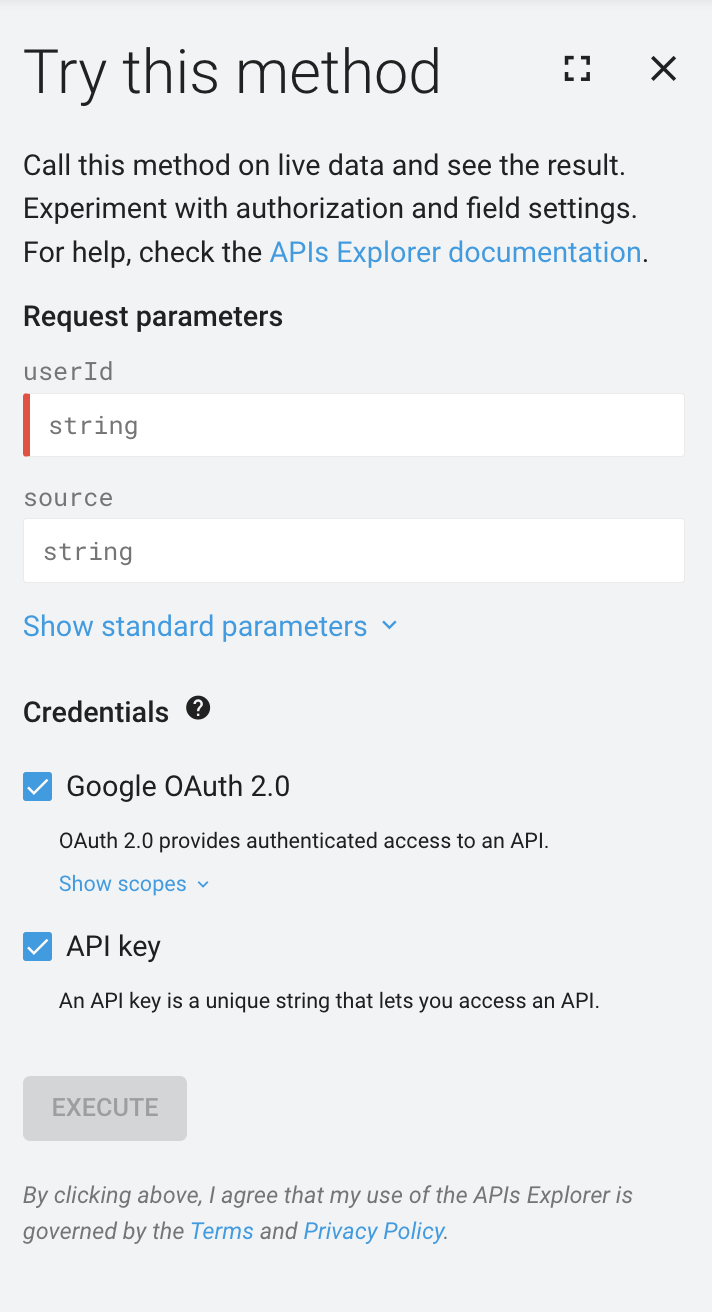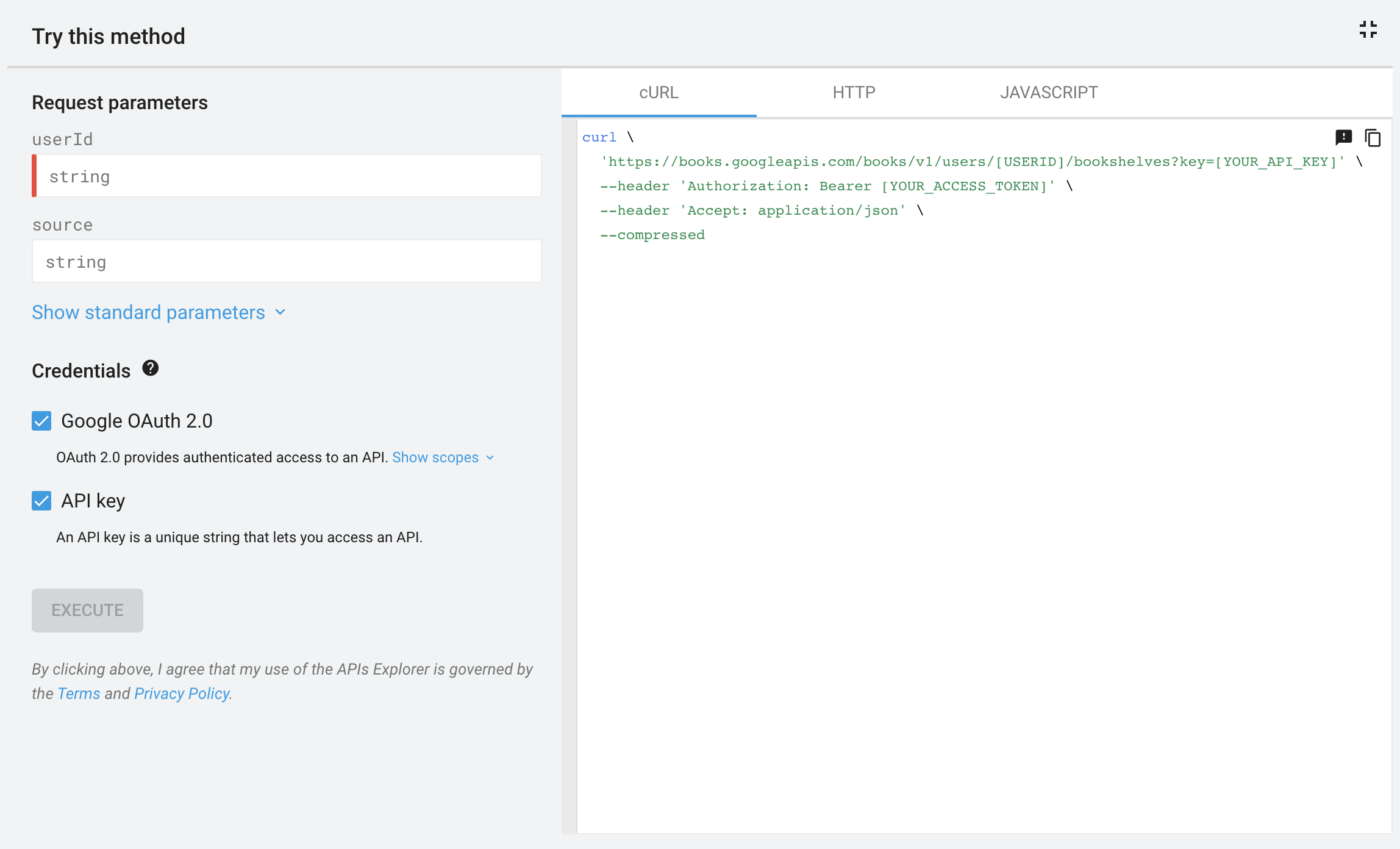Der Google APIs Explorer ist ein Tool, das auf den meisten Dokumentationsseiten für REST API-Methoden verfügbar ist. Damit können Sie Google API-Methoden ohne Programmieren testen. APIs Explorer reagiert auf echte Daten. Seien Sie deshalb vorsichtig, wenn Sie versuchen, Daten zu erstellen, zu ändern oder zu löschen.
Verzeichnis verwenden
Eine Liste der verfügbaren Google APIs finden Sie im Google APIs Explorer-Verzeichnis. Diese Liste enthält Links zur API-Referenzdokumentation für unterstützte APIs. Führen Sie die folgenden Schritte aus, um die API kennenzulernen:
- Öffnen Sie das Google APIs Explorer-Verzeichnis.
- Geben Sie oben im Suchfeld den Namen der API ein, die Sie untersuchen möchten.
- Klicken Sie auf den Namen der API. Die API-Referenzdokumentation wird geöffnet.
- Klicken Sie links auf die Methode, die Sie in der Navigation verwenden möchten.
Suchen Sie auf der rechten Seite nach dem Steuerfeld mit dieser Methode." Unten finden Sie weitere Informationen zur Verwendung der Seitenleiste von APIs Explorer und dazu, wie Sie sie in APIs Explorer im Vollbildmodus maximieren können.
Seitenleiste verwenden


Standardmäßig wird APIs Explorer auf der rechten Seite des Bildschirms in der API-Referenzdokumentation für die unterstützten Methoden angezeigt.
Sie können die folgenden Abschnitte in der Seitenleiste von APIs Explorer anpassen und damit interagieren:
- Anfrageparameter, falls dies für die Methode erforderlich ist.
- Anfragetext, falls für die Methode erforderlich.
- Anmeldedaten, um die Methode mit verschiedenen Anmeldedatentypen und Bereichen zu testen.
- Schaltfläche Ausführen, um die Methode mit den von Ihnen angegebenen Parametern und Einstellungen auszuführen.
- Ergebnis wird nur nach der Ausführung der Methode angezeigt.
Vollbildmodus verwenden


In der minimierten APIs Explorer-Seitenleiste können Sie auf „Vollbild“ klicken, um APIs Explorer zu maximieren. Im Vollbildmodus wird ein zusätzlicher Bereich mit Codebeispielen, application/json-Antworten und unbearbeiteten HTTP-Antworten angezeigt.
Authentifizierung
APIs Explorer verwendet zum Senden einer Anfrage eigene Anmeldedaten. Mit APIs Explorer können Sie keine benutzerdefinierten Anmeldedaten verwenden.
Datenformate
APIs Explorer unterstützt nur JSON für Antworten und Anfragenutzlasten. Selbst wenn Ihre API andere Datenformate unterstützt, funktionieren diese Formate nicht im APIs Explorer.
